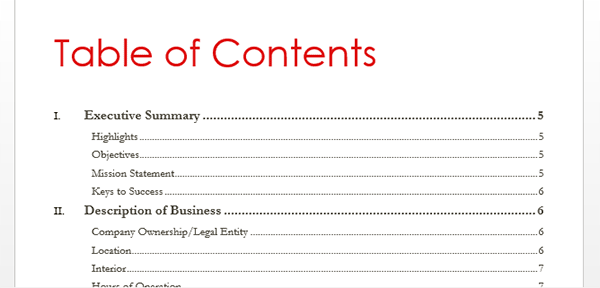
- #Create table of contents in jutoh how to#
- #Create table of contents in jutoh pdf#
- #Create table of contents in jutoh android#
The entries appear in the Contents page of the Project Properties dialog (under Indexes/Contents), and are also editable in the Table of Contents Wizard. In this mode, you maintain an explicit list of contents entries, with help from Jutoh. Jutoh supports an additional, advanced method of building a NavMap and table of contents. The extra page will appear in your book, but will not be visible in your Jutoh project. Jutoh can also create a basic table of contents page simply by checking the Generate table of contents property in the current configuration (Project Properties/Configurations). When creating an Epub file, Jutoh always creates a NavMap (by default, from the titles of your book sections). On Kindle devices and apps, the NavMap may be shown in a sidebar or when clicking Go to. Kindle Previewer showing the logical contents (NavMap) On Kindle for PC and Mac, you can show the NavMap using View | Show Table of Contents, and on Kindle Previewer 3 this is shown on the left-hand panel, as below: Mobipocket files also have a logical table of contents (NavMap). The main point is that in an Epub you have to have a NavMap, but a separate table of contents page is optional.


The following screenshot of Adobe Digital Editions illustrates the difference between a NavMap (on the left) and a table of contents (on the right):Īdobe Digital Editions showing a NavMap and table of contentsĮbook readers will present the NavMap in different ways, and some may label it the ‘table of contents’. In Jutoh we’ll call these ‘NavMap’ and ‘table of contents’ respectively. It’s just a regular page with hyperlinks to your book sections. Optionally, you can create a page listing the contents of the book – more like the contents you’ll see in a book. In an Epub 2 book, there is always a NavMap (navigation map, or logical table of contents) which tells your ebook reader to list the sections in your document.
#Create table of contents in jutoh how to#
For a simple book, you don’t have to know how to use these, and Jutoh will generate a simple table of contents automatically by default. Jutoh can help you with four kinds of index – table of contents, alphabetical index, endnotes (or footnotes at the end of each section), and bibliography.
#Create table of contents in jutoh pdf#
The program allows you to create PDF files.Contents | Start | End | Previous: Chapter 10: Working With Pictures | Next: Chapter 12: Working With Style Sheets Chapter 11: Working With Indexes.The application includes various templates for your eBook covers.The program comes with several templates which will help you design the cover of your eBooks. You can also create footnotes, a table of contents, bibliography, and index. the application lets you add boxes, images, and tables. You can also create eBooks from scratch by using the integrated text editor. Jutoh allows you to quickly create eBooks from already existing files with the aid of the Quick Convert feature. Moreover, you have the possibility to create PDF files which can be sent to print-on-demand services.
#Create table of contents in jutoh android#
The eBooks can be read on iPad, Kindle, iPhone, Mac computers, Android devices, and Windows computers. The created eBooks can be published on various websites, including Apple's iBooks, Amazon'z Kindle, Kobo, Google Play, and many others.


Jutoh is a free and lightweight application which enables you to effortlessly create eBooks in various formats, such as Kindle and Epub.


 0 kommentar(er)
0 kommentar(er)
